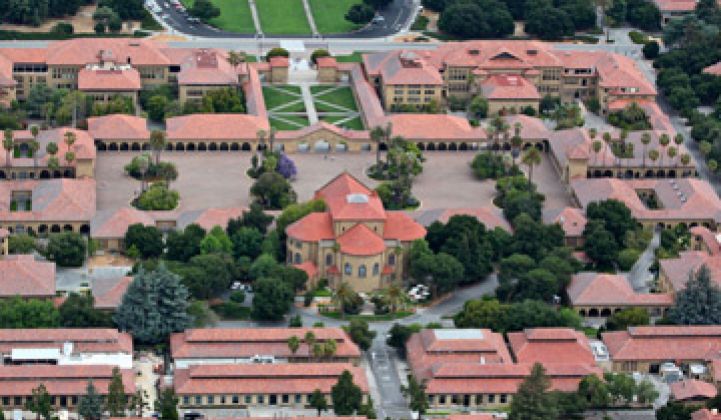As part of the new SunShot Initiative, seeking to reduce the cost of solar power 75 percent by the decade's end, the U.S. Department of Energy awarded $25 million to SVTC Technologies and $25 million to the Bay Area PV Consortium, a project managed by Stanford University and UC Berkeley. The program is targeting an installed cost of $1 per watt, which corresponds to roughly 6 cents per kilowatt-hour.
The consortium will use the funding to develop materials and manufacturing processes that can drive down the cost of producing photovoltaic modules. Meanwhile, SVTC, a spin-off from Cypress Semiconductor, will create a facility that will perform pilot production services for solar startup companies.
The Consortium includes the SLAC National Accelerator Laboratory, Lawrence Berkeley National Laboratory and NREL. Sixteen companies have committed more than $1 million per year toward meeting the DOE’s cost-share requirement.
I spoke with Yi Cui, Associate Professor at Stanford University's Department of Materials Science and Engineering, the Primary Investigator at the consortium. Cui is also the founder of Amprius, a battery company we've covered here.
Cui said, "With a goal of $0.50 per watt, everything needs to be very cheap -- we can't just focus on one thing."
Included in the shopping list of technologies to address are:
- Low cost III-V materials, chalcogenides, and Organic Solar Cells (OSCs)
- Photon management for each type of solar cell -- using all the photons via texturing on the PV cell or on the substrate
- Anti-reflective coatings
- Substrate improvements
- Transparent conductive electrodes (replacing indium)
- Solar cell reliability and encapsulation in sun and moisture
- Advanced characterization techniques
"It's a comprehensive program to get to $0.50 per watt," summed up the professor.
Hitting the 50-cent goal for modules would fit with SunShot, which envisions solar electronics at 10 cent a watt and installation and other costs at 40 cents per watt.
And instead of being just blue-sky research, the consortium does have an industry board "that will help define the research direction for industry relevance balanced with the creativity from the university," according to Cui.
In the past, Yi Cui's group has researched nanoscale wires, pores, bumps, and other textures that can potentially improve the performance of solar cells. With an eye towards manufacturability and scaling up to large areas, Cui has said, "Many methods are really complex and don't solve the problem."
On the topic of SolarShot funding, Innovalight, the silicon ink startup that's been winning Chinese solar customers, just received funding under the SunShot initiative for $3.4 million to accelerate the development and production of its materials and processes for high efficiency solar cells (more on Innovalight here). Innovalight is also backed by EDB Investments, Vertex Venture Holdings, Apax Partners, ARCH Venture Partners, Convexa Capital, Harris & Harris Group, Sevin Rosen Funds, and Triton Ventures.



